
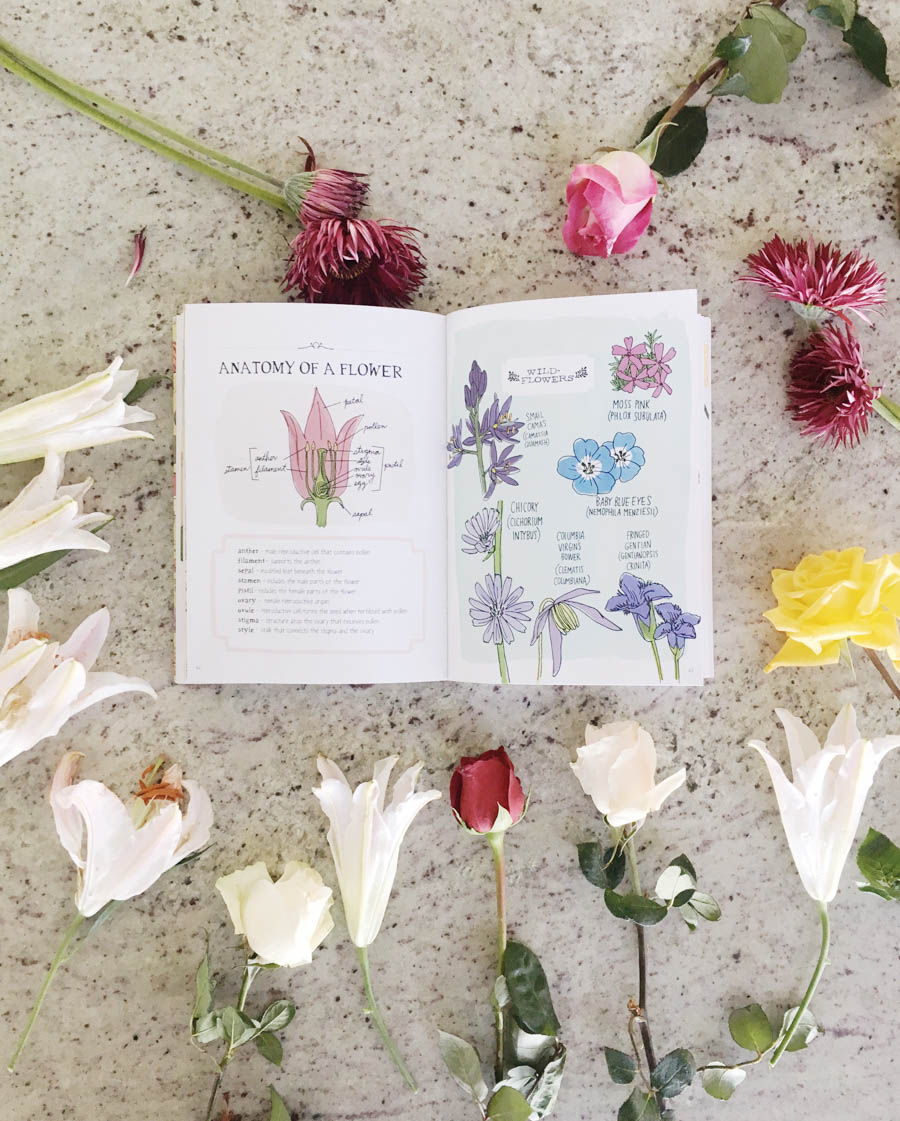 Perhaps one of the best parts of Spring weather is all of the wildflowers blooming. We naturally are outdoors more, and so I always look for ways to bridge the natural world in my children’s play and learning. This season we have studied flower parts, collected flowers, planted wildflowers, dried wildflowers, and more recently made Sun Art. I thought I would write down a few ideas to share, activities that are versatile for ages and locale. I also listed a few of our favorite flower books to complement our learning. Happy Spring!
Perhaps one of the best parts of Spring weather is all of the wildflowers blooming. We naturally are outdoors more, and so I always look for ways to bridge the natural world in my children’s play and learning. This season we have studied flower parts, collected flowers, planted wildflowers, dried wildflowers, and more recently made Sun Art. I thought I would write down a few ideas to share, activities that are versatile for ages and locale. I also listed a few of our favorite flower books to complement our learning. Happy Spring!
1. Dissect a Flower / Wildflowers can be difficult for this since the flower parts are often small and more difficult to identify. We found that Lilies worked best since their parts were easier for young ones (and adults) to identify. Consider gluing/taping and labeling the parts to a sheet of paper as you identify them for review. Microscopes aren’t necessary for this activity, but they are a special addition for older children to see small parts up close. This sturdy, American-made Magiscope is our favorite, if you’re looking for future gift ideas for your homeschool. ;)
2. Create Sun Art / This activity always turns out beautifully, and is simple enough for preschoolers to enjoy. I purchased this Sun Art paper, although a smaller size would work, too. Consider cutting the larger sheets to create bookmarks or even layer over cardstock for special cards. The children collect the flowers and arrange them indoors on the blue paper, out of the sun light. When they are ready, they take the paper to the sun and lay a piece of acrylic, the set arrive with, over the top. Press down firmly to prevent shadows, and leave it in the sunlight for a few minutes until the paper turns white. Rinse the paper under water for a minute and let it dry. All Done!
3. Flower Scavenger Hunt / Print a paper with local wildflowers and set out on a walk around the neighborhood or in a nature preserve to see how many you can find. See how many you all can name without looking it up.
4. Press Wildflowers / I loved doing this as a child, and it only works if you’re picking in an area where it’s allowed. Spread and wrap a handful of blooms on a paper towel. Press between the pages of a book. Stack heavy books on top and leave for a few days, until the flowers are completely dry.
5. Wildflower Memory Game / Gather several different wildflowers from one area. Spread out across the table, covering each different flower with a cloth. Remove the cloth and let the children study the flower for a 30 seconds to a minute, then cover again. Send them into the field to see if they can remember which flowers were on the table. For young children, choose five flowers. For older children, choose up to 10 different flowers. My kids love this one!
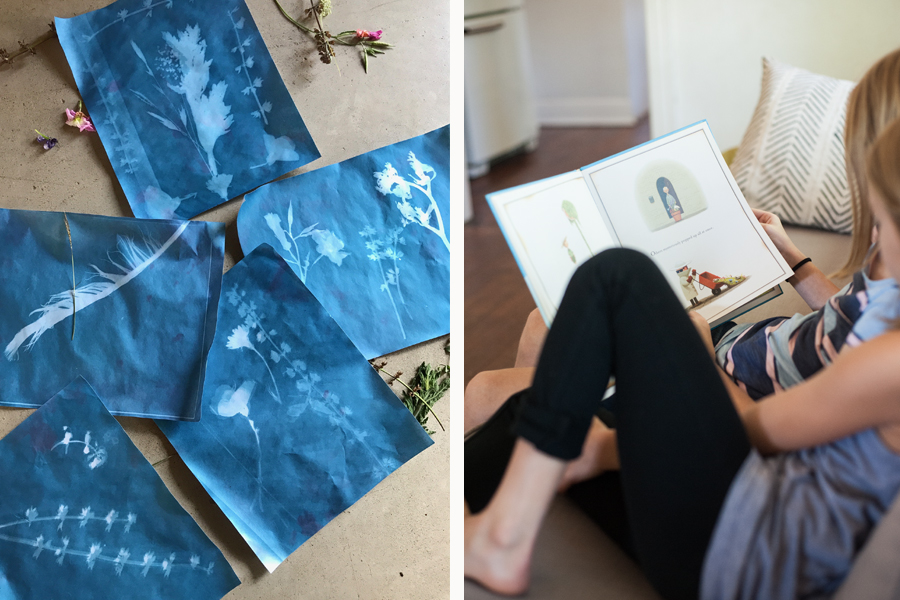
6. Make Nature Faces / Cut a piece of cardboard or brown paper bag in an oval shape. Have the children collect plants and flowers to make facial features for the oval. Glue them to the board and name their nature faces to play with or hang on the wall.
7. Create Flower Crowns / Of course, flower crowns can be beautifully elaborate and complex, but they needn’t be for child play. Look for long grasses or weeds to tie or braid together. Tie flowers to the mix and wear for outdoor pretend play.
8. Plant Wildflowers / For all the activities that require picking wildflowers, here’s an opportunity to give back. Purchase seeds that will grow well in your area and create a personal garden, or spread them along empty fields and highways for the public to enjoy.
9. Dry Wildflowers and Herbs / Gather a small bunch of favorite flowers or herbs and tie them together. Hang them in an arid area of your home, near a door or window that often open, and leave them for a couple of weeks until completely dried. Cu herbs to use in the kitchen, or hang the wildflowers in a bedroom.
10. Create a Wildflower Journal / Take photos, dry-press, or illustrate wildflowers you discover. Help your children label their common and scientific names and location. Add new pages each time you go for a nature walk or even for the next season.
11. Make Your Own Wildflower Nomenclature Cards / Nomenclature or three-part cards are a Montessori memory and learning tool, where three separate card parts are matched together. The top part is the largest with a photo of the flower, the next part has the name of the flower, the third part a description (better for older children). Create your own local nomenclature cards by taking images of flowers you discover during nature activities or play. Learn about the flower together with your children, and help them create the name card and description card for matching and memory work.
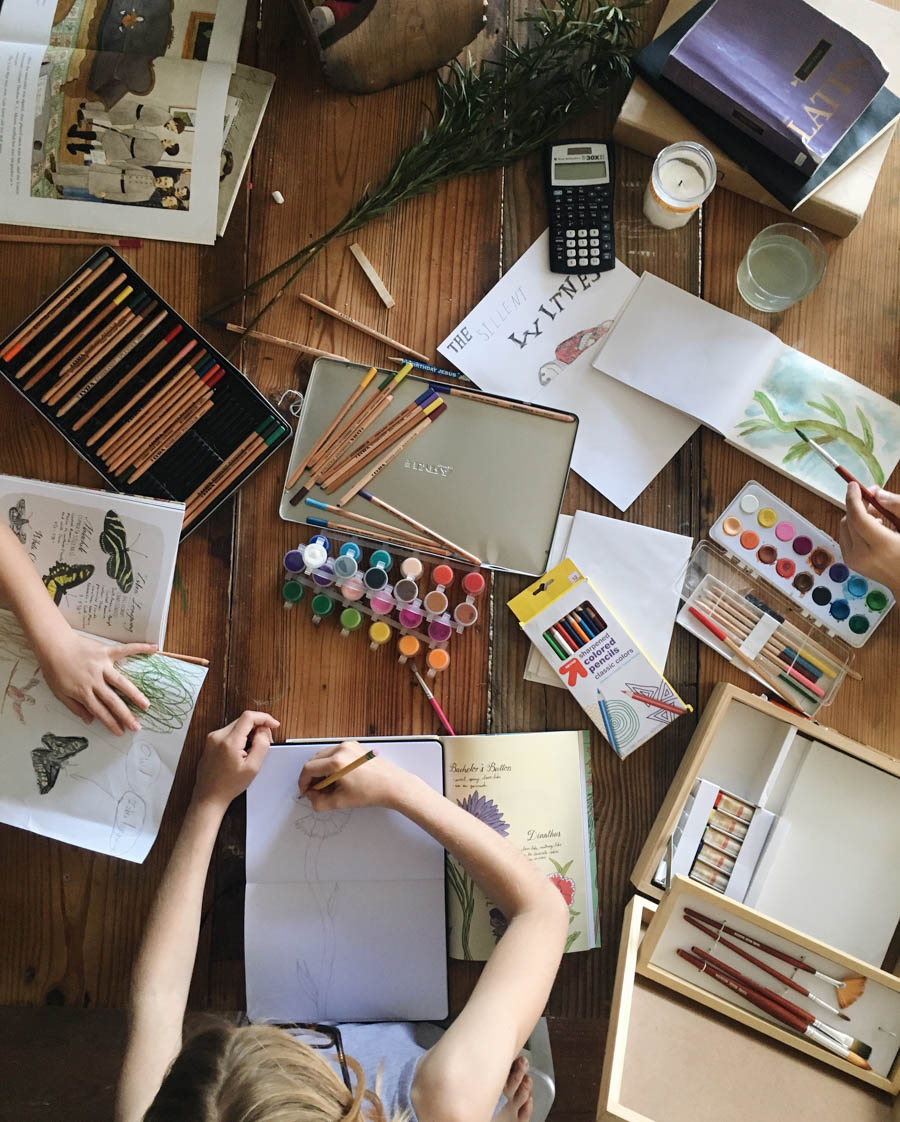
12. Play Wildflower Board Games / Make your own Bingo or memory game with photos or try this one.
13. Gift Wildflower Seed Packets / Share the gift of Spring blooms with friends and neighbors. Purchase wildflowers seeds in bulk, and add a spoonful to these mini-envelopes. Let your children stamp a wildflower on the front.
14. Grow Flowers from Seeded Paper / What a magical experiment for young children. This is best matched with beloved Eric Carle’s The Tiny Seed.
15. Color Previously Illustrated Wildflowers / This vintage styled coloring book has over 44 favorite, full-page wildflowers with information about each for your little artists. Plop down on a blanket with them and color together. Find out if any are local to your area.

FAVORITE LITERATURE + BOTANY RESOURCES FOR YOUNG CHILDREN TO ADULTS
Miss Rumphius | This is one of my favorite books, and we read again and again each time Spring arrives. It prompts questions of what each of us are doing to make the world more beautiful.
Nature Anatomy | The spine on this book is worn thin with use and reference and is still my children’s favorite. It covers many topics lightly with beautiful illustrations, a perfect resource for wetting little appetites.
Up in the Garden Down in the Dirt | This book is larger in theme than flowers, but I appreciate how it shows the connection between the life below and above the earth’s surface, and the relational connection of the family in the garden. Plus, the illustrations are just lovely.
A Seed is Sleepy | Beautifully illustrated and labeled like each of Dainna Aston’s books, this one poetically tells the power and life of a seed.
Play the Forest School Way | This is another favorite reference for playful activities outdoors. I adapted two of the activities above from this book, and I love that they label each activity with age-appropriateness.
The Tiny Seed | Eric Carle. Need I say more? This one is perfect for exploring the way seeds travel and grow with early learners, and new copies arrive with seeded paper for you to plant and experiment with at home!
Planting a Rainbow | This one is another perfect read with littles to introduce flower names, color, and seed bulbs.
The Curious Garden | Peter Brown is another favorite author here. My oldest received this one as a gift several years ago, because he and the main character share a name, but I love this story for so many reasons. It models the importance of caring for the earth, the power of plant life to beautify spaces and uplift the human spirit, and the impact of even the smallest actions to create change.
The Secret Garden (I love this collector’s edition) | This is a wonderful read aloud or shared read with older children, exploring ideas about growing gardens both literally and metaphorically.
How to Be a Wildflower | Filled with poetic quotes and ideas, this beautifully illustrated field guide is for older children and adults both to enjoy!
Botanicum | This one is currently on our wishlist, but we’ve enjoyed Animalium so much, I know we’d love the illustrations and descriptions here, too.
The Gardener | Like The Curious Garden, this introduces the contrast of urban and country settings, and the power of natural life and beautiful florals to uplift the human spirit. It is also formatted with letter writing, perhaps inspiring a lost art, even in our home.


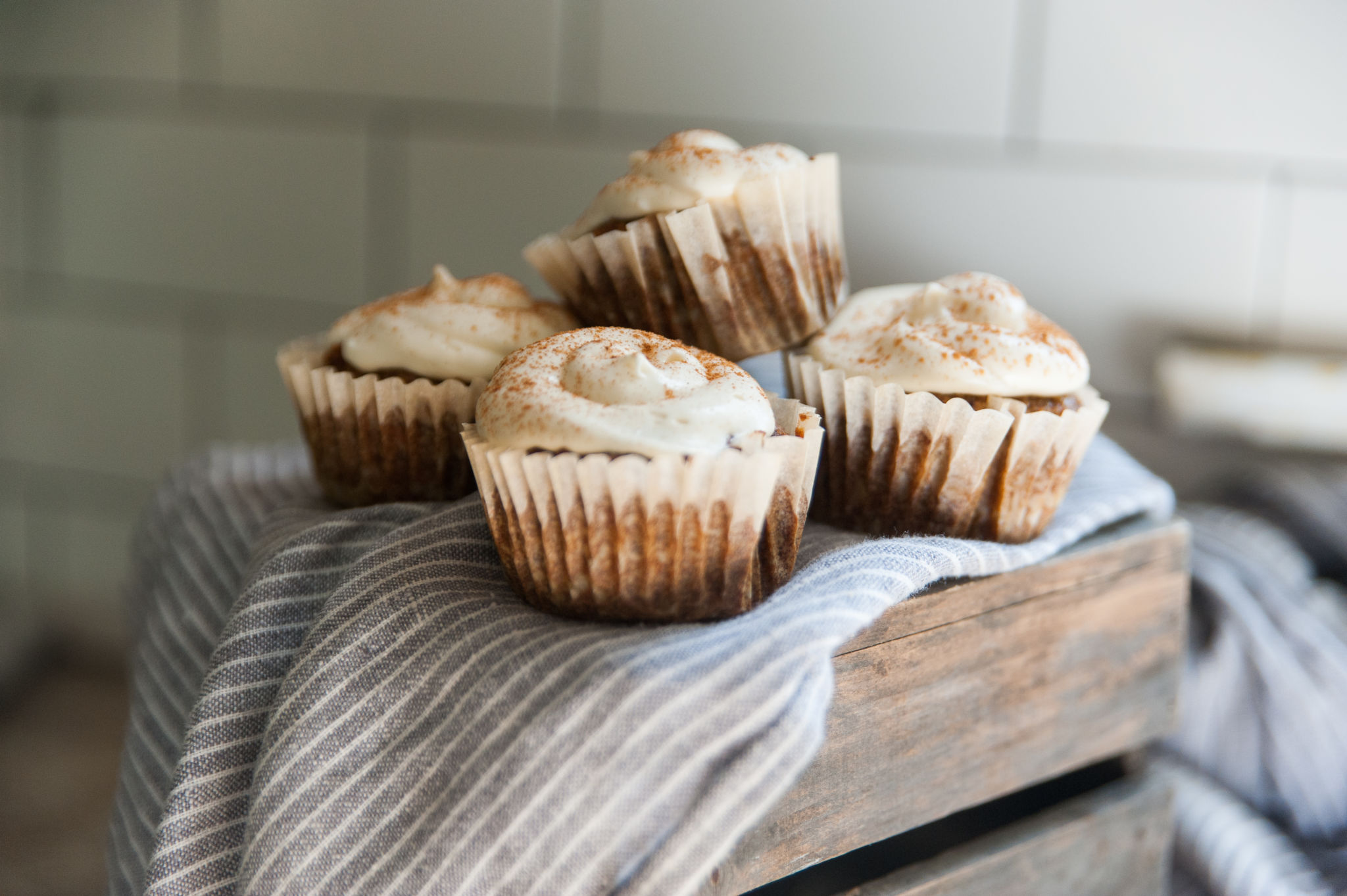
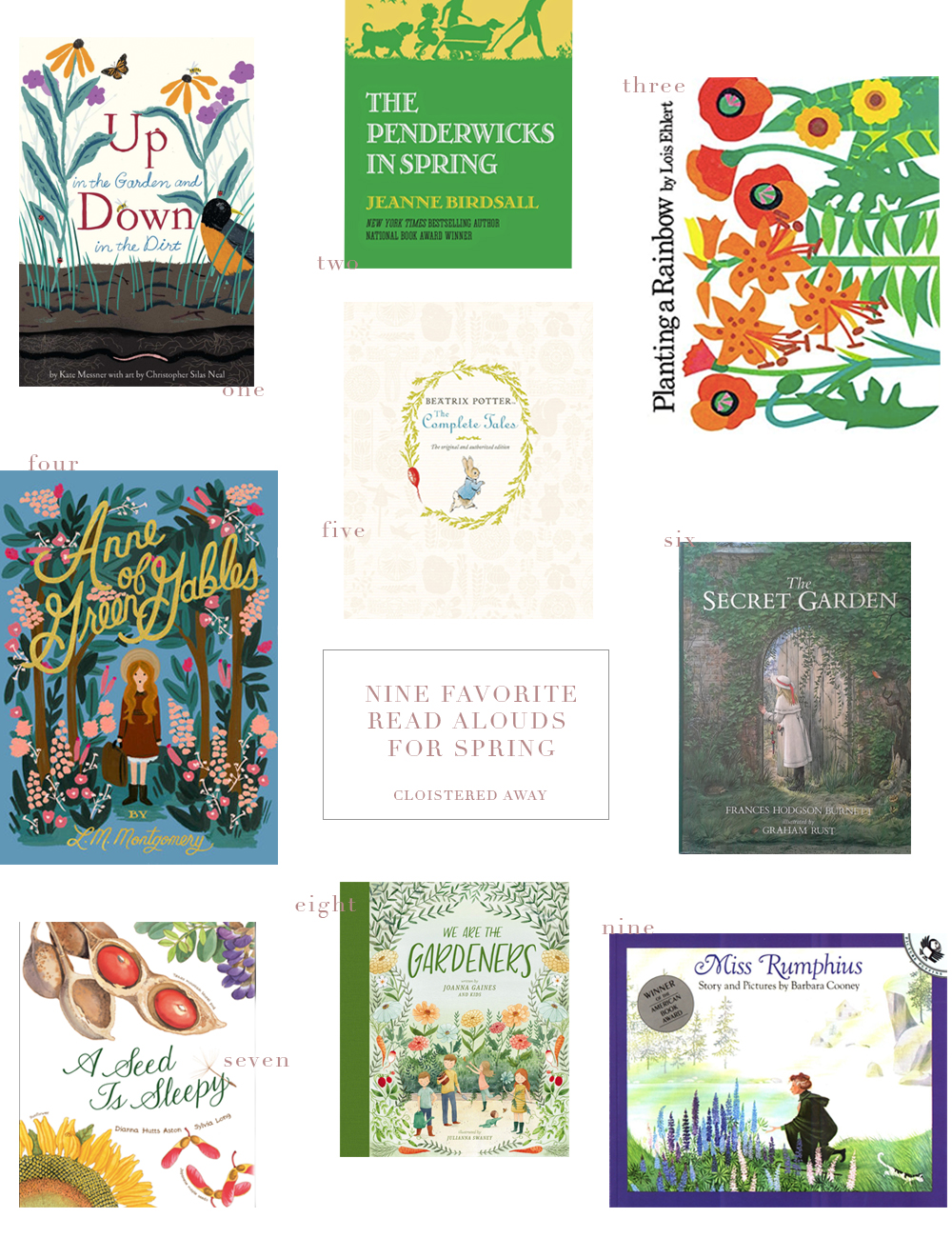
Comments
I always love to read your posts and to look at the beautiful pictures. Thank you for being such an inspiration. It seems to me that you are a wonderful mother. Maybe you would love the book ” The Country Diary of an Edwardian Lady” by Edith Holden. Even though it is British and so are the painted plants, it is just lovely to look at and to browse in it. Have a wonderful week.
Thank you so much for the recommendation, Inga. I look forward to finding it! x
Inga, what a lovely book! It reminds me of another one called The Psalms of David by Stephen Freemantle, all done by hand- so beautful!
Such a beautiful picture, that first one.
Thank you, Celia. x
This is perfect for my flower loving four year old! Thank you for creating such a beautiful retreat for me. Motherhood is a lonely endeavor at times and I am blessed to consider you a co-worker in the most important of all professions! Thank you!!
I’m so happy to hear it, McKenzie. The early years can be particularly wonderful for these sort of explorations and learning. ;)
Ooh, you must add “The Night Gardener” to your collection! The most beautiful, magical illustrations…
I haven’t heard of it, but I love the sound of it. Thank you, Amber, for the recommendation!
Love this list! Thank you for sharing the book and activity ideas!! Off to check my library’s website to see if they have some of these titles! ?
Perfect, Christa. I hope you enjoy them as much as we have.